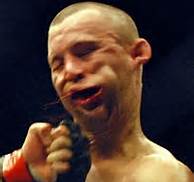yeniseri wrote:my initial reaction is that Chan Yanxi teaching something other than his family martial art is unlikely. There is no indication that Chen Yanxi studied primarily with his father, Gengyun, and there is significant indication that Gengyun was gone from the Chen Village running the family branch caravan escort service and off to war fighting against the Taiping Rebellion.
So, I appreciate the assertion, but even if true, I’m not sure how it enhances our knowledge of the history of taijiquan.
,
From my perspective, experience and knowledge (limited of course, due to my lack and inability to read Pǔtōnghuà ( 普通話; 普通话), it is a sometime natural practice to study origin
roots of a 'modern system' as a way to assess and perhaps, pick up things that previous generation were not aware about, and/or historical patterns that one may understabnd and appreciate more,
what that tradition delivers as insight, into the current training methodologies.
t has been reported that a few of Chen Xiaojia (Small Frame) relatives, (originally from Chenjiaogou who left the village and went
to study a Tongbei routine that resembled chenshitaijiquan. It does not mean that the practiioner wanted to beocome a Tongbei 'expert' or demean the art but a practice worthy of study for its own sake!
It does not demean chenshitaijiquan. It enhances it providingg we have the respectful vision of each man learning his art based on his/her own capability. That is the Dao as I understand it. Nothing to do or undo
but if one sees something worthy of 'change' and it is useful, incorporate it. I do that im my few associations with taijiquan student of the past. If a student has problems with x posture then I change to
reflect the capabilty of the student as long as the individual can assess and see the new change(s). The story related that Chen Liqing was the one who researched Tonbeiquan!
Even Zhaobao taijiquan has attempted to usurp the Chen Family method (Chenjiagou) though it has incorporated other influences when in fact the central figure of Zhaobao originally came from Chen village

@yeniseri I think you misconstrue my meaning a bit. I am in agreement with you on all counts about the value of historical background. I would go further to add that I think it enhances our understanding of an art and taijiquan, in particular, to understand the context in which it developed. However, I look at all evidence with a critical eye. There are lots of claims. I am looking for verifiable, accurate evidence.
One of my taijiquan lineages comes through Du Yuzi, a student of Chen Yanxi (abt. 1827- abt. 1914), so I am always interested with anything to do with him. I have done my best to chronicle his life. So, it is of some interest to me that he may have called his art for some reason "Liuhe Tongbeiquan". Why can only be speculation at this point.
While there is evidence that tongbeiquan may be a contributing martial artist the development of taijiquan, I have not seen any evidence that the Chen family as a group ever called their family art Tongbeiquan.
In another post in this thread, I summarize a source that discusses Hongdong Tongbeiquan from Shanxi. The researchers and Chen Liqing, a small frame master, believe that this martial art was taken during the reign of the Qianlong Emperor (1736-1795) by a Chen Family member fleeing murder charges to Shanxi, where he took on a new identity and renamed and taught his martial art.They hail this find as the long lost Chen 108 longfist that ceased to be practiced by the Chen family in the early to mid 1800s. This is a good disguise for taijiquan, since tongbeiquan probably dates back to the Song Dynasty (960–1279). With a 500 year old history there were many variations in the 1700s. And, as alluded to, there are some Tongbei-like movements in taijiquan, so it probably was not a hard sell. Further, he taught, not the Thirteen Postures set that all of our taijiquan forms are based on. He taught the Chen 108 Longfist set that is thought to have been based on Song Emperor’s Longfist (Taizu Changquan) that dates at least to the Yuan Dynasty (1279–1368).
The form that Liqing and her students learned and believe to be Chen 108 Longfist can be seen at this link. The video will not embed.
https://www.youtube.com/watch?v=Ja5xE_dwjGANow, if you know of another small frame taijiquan group that learned tongbeiquan because is was similar to taijiquan, I would be very interested in seeing this source
So, while the Chen Liuhe Tongbeiquan is of interest to someone like me interested in Chen Yanxi. it does not seem to be that relevant to the development of taijiquan.












